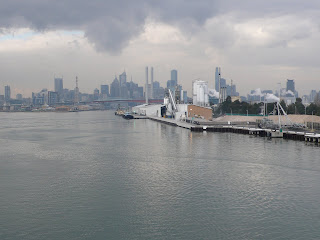



Boston “T”: 28th August, 2010
Finally, we have managed a city’s transport system, in this case, using Boston’s Charlie Ticket, which provides a card to ride the so-called “T”, buses, trains and ferries. This has reduced the stress associated with being mobile. But while we were able to cross Boston with aplomb and confidence walking around Harvard Yard and Harvard Square without getting lost, taxed our brains. Cambridge (which is home to Harvard and MIT) is NOT Boston; indeed, it is an academic city, which pulsates night and day with mental energy—many seem to be ensconced in their iPad or Kindle—particularly at the moment when the university is admitting its freshmen and women and of which we were able to take advantage.
We have explored the delights of Beacon Hill and Back Bay (Boston’s equivalent to Chicago’s “Magnificent Mile” though with a distinctly more French accent); we have experienced the best of public libraries with the new Cambridge Public Library just across the park from where we are staying and the Boston Public Library with its wonderful Singer Sargent murals and its free Friday jazz poetry concert where we heard Robert Pinsky, US poet laureate perform along with a saxophonist and percussionist.
We have eaten really well each evening through our own discoveries and from recommendations from our cordial Bed & Breakfast host David. We have also met very interesting people who have asked us about our travels and shared their tips for the getting the best out of this region.
Today we made an excursion to Gloucester, just north of Boston, which is one of the US’s oldest ports, one long associated with whaling, and latterly with the Rocky Neck School of Painters. It was also the home of American poet Charles Olson, whose Maximus series is set in Gloucester and which is about to celebrate the centenary of his birth with a conference. It transpires that Olson was instrumental in helping to preserve much of the town’s waterfront. On the recommendation of the Pollocks whom we met in the Gloucester Public Library we found Olson’s apartment and actually met his landlord who said Olson was “a pain in the butt”. Thanks to the Pollocks we also explored the Cape Anne Museum, a beautiful regional museum displaying regional art, fishing and quarrying cultural history as well as a wonderful collection of early furniture.
And getting back to Boston and its famous tea party (not to be confused with the recent one which is having a powerful influence on Sarah Palin’s faction of the Republican party) we don’t know whether our request for tea in a china cup was being parodied when Colin’s arrived in this oversized cup. Boston like all US cities we have experienced appears to be in love with the chain café and the disposable container for taking one’s coffee or tea in or out. We just don’t get it.















